After more than 20 years in practice, John Principe was ready to quit.
“I was just tired of doling out pills and having people die of the same disease I was quote-unquote treating,” says the 58-year-old internist. While he was helping his patients manage their illnesses, he says, he wasn’t changing their lives.
Before walking out the door in 2008, he attended the Healthy Kitchens, Healthy Lives conference in California’s Napa Valley, a collaboration between the Harvard Chan School of Public Health and the Culinary Institute of America. The conference teaches health professionals about the basics of nutrition and exercise, focusing not only on what to eat but also on how to cook it, topics most medical curricula never touch.
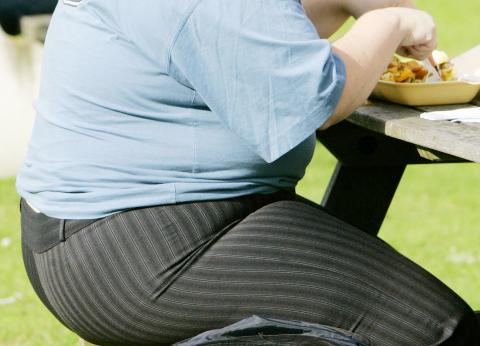
Photo: AP
For Principe, it was a game changer. In 2009, he founded a new practice, WellBeingMD, bringing in homemade food and sharing his recipes with patients. He taught cooking classes at a local community center. In 2010, he built a teaching kitchen in his office.
“I mortgaged my house to do it,” he says, “but it’s something I believe in.”
Americans are growing increasingly conscious of their health, as diet-related conditions such as diabetes and heart disease remain stubbornly among the top causes of death in the US, but many people don’t know what healthy food looks like. Many doctors don’t know, either. More and more, though, are interested in learning how to give practical eating advice, based on the kind of peer-reviewed science they’ve always relied on. Those skills are even making their way into medical school.
COOKING TO HEALTH
Besides keeping the traditional appointments, Principe now leads cooking classes on such topics as digestive health and blood sugar control. Patients prepare their own healthy dishes, like nut milk for those who can’t have dairy, or sauerkraut and other fermented foods for gastrointestinal health. One patient in a YouTube video last year about his practice says she was sick all the time and didn’t know if she would live to see her kids graduate from high school, then recovered her health and lost almost 30 pounds. Another says he no longer needs his statins or his asthma medication. Principe cites a waiting list of more than 500 patients and says he’d love to bring them in but first needs to find a “likeminded” doctor.
He might not have to look far. In the past decade, the Healthy Kitchens, Healthy Lives conference has been offered 12 times, always meeting its 400-person maximum. It has a waiting list, too.
“They are tutored by world-class chef-educators and shown they can do it,” says David Eisenberg, who heads up culinary nutrition at Harvard Chan and is co-director of the conference with Greg Drescher, who leads strategic initiatives at the Culinary Institute.
“In that experiential moment, I think many doctors are transformed,” Eisenberg says.
Their own diets, at least, are transforming. In 2013, Eisenberg published a study that tracked the impact on the participating health professionals themselves. Of the attendees that responded to his survey, 58 percent had cooked their own meals five or more times a week before the conference. Afterward, 74 percent did. They ate more vegetables, nuts, and whole grains. Before the conference, only 40 percent had rated themselves as “good or excellent” at helping overweight or obese patients improve their nutritional and lifestyle habits. Three months after the conference, it was 81 percent.
MEDICAL SCHOOL PRACTICES
Since 2012, the Tulane University School of Medicine has been teaching medical students, as well as licensed practitioners, how to cook in its own teaching kitchen, at the Goldring Center for Culinary Medicine, led by Timothy Harlan, a trained chef and doctor. The program has been licensed to more than 10 percent of the country’s medical schools. A proponent of the much-studied Mediterranean diet, Harlan wants his students to be able to advise their future patients in concrete terms, even in a short office visit.
“We’re working to create two-minute interventions,” Harlan says, to get a salt snacker to switch from Cheetos to nuts, or an Egg McMuffin lover to try the equally convenient bowl of cereal with yogurt.
As with the Healthy Kitchens, Healthy Lives participants, a study found that the Tulane med school students participating in the program saw their own diets improve as a result. The same turned out to be true of diabetic community members who had taken the Tulane courses.
DIFFERENT METHODS
Some have made do with a lot less. After a successful pilot program the year before, in 2013, Stanford University School of Medicine’s Maya Adam launched a free online course, through Coursera, of 47 videos on childhood nutrition and cooking. The four- to six-minute videos show Adam cooking in her own home kitchen, explaining what she’s doing, sometimes while carrying a child. More than 250,000 people from all over the world have watched. A study that included 7,422 of them found that participants cooked more often, their meals were healthier, and they enjoyed them more. The school has since turned an existing kitchen into a teaching kitchen, with Adam instructing its first course, and launched a second series, featuring Michael Pollan, with a couple of cameos from Eisenberg.
Nutrition can be taught without a stovetop. At Georgetown University Medical Center, Thomas Sherman, a molecular neuroendocrinologist, has fought to get the subject on the curriculum, finding a place for it in a new, integrative course on metabolism, nutrition, and endocrinology. Now the university is building a teaching kitchen into one of its dorms. It will be “nothing like Tulane’s, but a place where we hope, starting next year, we’ll have demonstrations,” Sherman says, adding, of Tulane’s Harlan, “I am just so jealous of everything he is doing down there.”
Each teaching kitchen, and each approach to culinary medicine, is different, depending on resources, patients, time and the practitioner’s professional and personal background.
“If you’ve seen one approach to culinary medicine by one doctor, you’ve seen one approach to culinary medicine by one doctor,” Eisenberg says.
There seem to be just as many ways to get insurance to cover it,?so doctors are getting creative. Instead of doing individual follow-up visits, Helen Delichatsios, an internist at Massachusetts General Hospital, often sees eight to 10 patients with similar concerns in one 90-minute appointment, addressing at least one of each person’s medical issues and including a 20-minute food demo at the end. She bills each patient to the insurance company as she would for a standard medical follow-up but gets an hour and a half with all of them instead of the 15 minutes she would typically get with each.
LEARNING TO COOK
In his practice’s teaching kitchen, Warren Ross teaches eight to 10 patients at a time about purchasing, preparing, and portioning food as part of an integrative-medicine practice. Patients learn how to pace themselves while eating, too.
“We do tasting portions, not full portions, but everyone walks away full,” he says.
John La Puma went farther than Principe, actually leaving medicine to go to the Cooking and Hospitality Institute of Chicago, now Le Cordon Bleu-Chicago. He has a big audience through his Web site, YouTube videos, seven books, consulting company and lectures, which he gives to as many as 1,500 people at a time, including clinicians, members of the general public, and the food industry. These talks usually include concrete advice — eat flax seed to lower your cholesterol — and cooking demonstrations.
“Doctors want to know the really tactile things,” says La Puma, who is based in Santa Barbara, California. “How do you hold a knife? How do you slice a mushroom without cutting a finger off?”
One doctor-chef has led group demos in conference rooms with little more than what she could carry: knives, a cutting board, and sometimes a portable skillet.
Michelle Hauser is a primary-care provider for a low-income community at Fair Oaks Health Center in Redwood City, California, a postdoctoral research fellow at the Stanford Prevention Research Center, a graduate of Le Cordon Bleu in Minneapolis, and one of Eisenberg’s early collaborators. She finds that those few tools are enough to show her patients how to cook a whole grain and mix it with chopped fresh vegetables and a homemade vinaigrette, a recipe with endless variations.
WRITING FEWER PRESCRIPTIONS
These doctors haven’t stopped writing prescriptions, though some say they write fewer than they used to. Principe says he writes so few that pharmaceutical reps don’t even visit him anymore. La Puma likes to use his prescription pad for recipes, but says he usually starts with food as a supplement to medication. Harlan emphasizes the evidence basis in peer-reviewed literature for the culinary counsel he provides, but doesn’t hesitate to give patients the pills they need.
“I am an allopathic physician,” he says. “I will write a prescription for a statin.”
“When it comes to nutrition counseling, that is an included benefit as part of many health plans’ coverage options,” says Clare Krusing, a spokesperson for AHIP, a trade association for the health insurance industry. She points out that there is currently some kind of nutrition-counseling coverage in 23 states but notes that it usually doesn’t include cooking classes. This kind of coverage may also be limited to patients with certain diagnosed conditions, such as a diabetes-related disease or obesity. Lawyers and students at the Harvard Law School Center for Health Law and Policy Innovation are helping provider organizations find ways to get coverage, both for the counseling and for the medically tailored food they serve to patients. The law clinic put out a 47-page report on ways to get public and private health care to cover both. It’s not enough, says Deputy Director Emily Broad Leib. “A lot of things aren’t covered until they’re a problem,” she says.
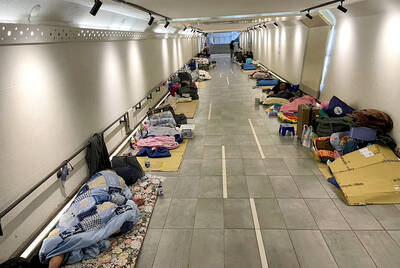
From the last quarter of 2001, research shows that real housing prices nearly tripled (before a 2012 law to enforce housing price registration, researchers tracked a few large real estate firms to estimate housing price behavior). Incomes have not kept pace, though this has not yet led to defaults. Instead, an increasing chunk of household income goes to mortgage payments. This suggests that even if incomes grow, the mortgage squeeze will still make voters feel like their paychecks won’t stretch to cover expenses. The housing price rises in the last two decades are now driving higher rents. The rental market
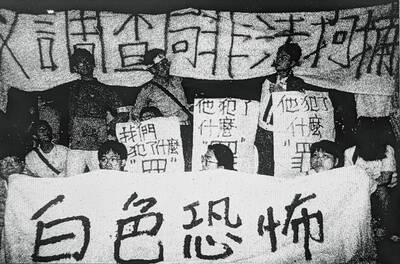
July 21 to July 27 If the “Taiwan Independence Association” (TIA) incident had happened four years earlier, it probably wouldn’t have caused much of an uproar. But the arrest of four young suspected independence activists in the early hours of May 9, 1991, sparked outrage, with many denouncing it as a return to the White Terror — a time when anyone could be detained for suspected seditious activity. Not only had martial law been lifted in 1987, just days earlier on May 1, the government had abolished the Temporary Provisions Effective During the Period of National Mobilization for Suppression of the Communist
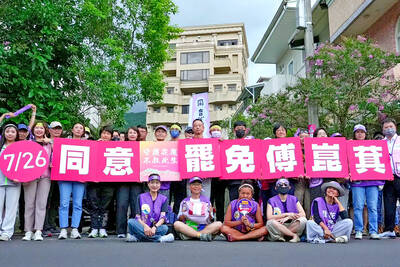
Hualien lawmaker Fu Kun-chi (傅?萁) is the prime target of the recall campaigns. They want to bring him and everything he represents crashing down. This is an existential test for Fu and a critical symbolic test for the campaigners. It is also a crucial test for both the Chinese Nationalist Party (KMT) and a personal one for party Chairman Eric Chu (朱立倫). Why is Fu such a lightning rod? LOCAL LORD At the dawn of the 2020s, Fu, running as an independent candidate, beat incumbent Democratic Progressive Party (DPP) lawmaker Hsiao Bi-khim (蕭美琴) and a KMT candidate to return to the legislature representing
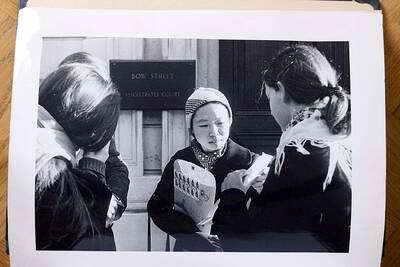
Fifty-five years ago, a .25-caliber Beretta fired in the revolving door of New York’s Plaza Hotel set Taiwan on an unexpected path to democracy. As Chinese military incursions intensify today, a new documentary, When the Spring Rain Falls (春雨424), revisits that 1970 assassination attempt on then-vice premier Chiang Ching-kuo (蔣經國). Director Sylvia Feng (馮賢賢) raises the question Taiwan faces under existential threat: “How do we safeguard our fragile democracy and precious freedom?” ASSASSINATION After its retreat to Taiwan in 1949, the Chinese Nationalist Party (KMT) regime under Chiang Kai-shek (蔣介石) imposed a ruthless military rule, crushing democratic aspirations and kidnapping dissidents from